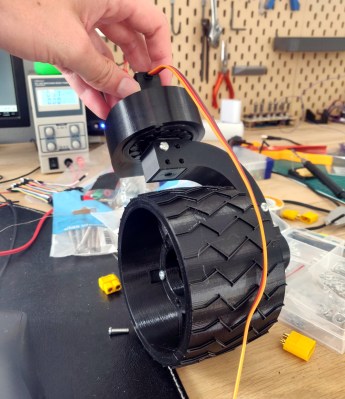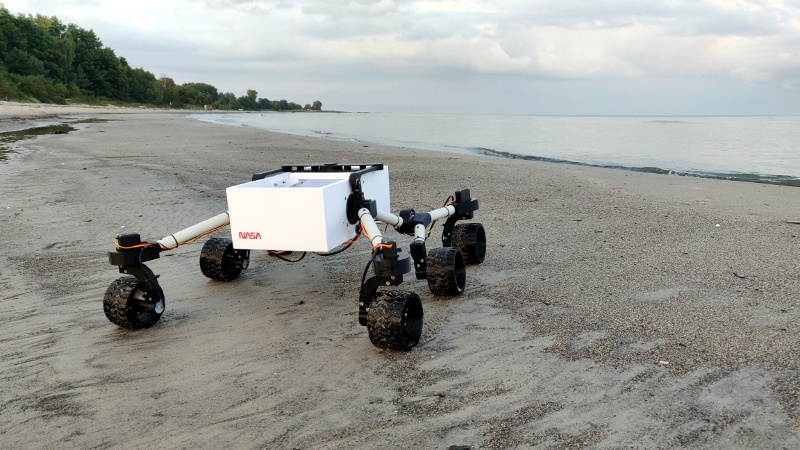More than a few hackers have put in the considerable time and effort required to build a rover inspired by NASA’s robotic Martian explorers, but unfortunately even the most well funded home tinkerer can’t afford the ticket to send their creation offworld. So most of these builds don’t journey through anything more exciting than a backyard sandbox. Not that we can blame their creators, we think a homebrew rover will look just as cool in your living room as it would traipsing through a rock quarry.
 But the DIY rover status quo clearly wasn’t sufficient for [Jakob Krantz], who decided the best way to test his new Curiosity-inspired rover was to let it frolic around on the beach for an afternoon. But judging by the video after the break, his beefy 3D printed bot proved to be more than up to the task; powering through wildly uneven terrain with little difficulty.
But the DIY rover status quo clearly wasn’t sufficient for [Jakob Krantz], who decided the best way to test his new Curiosity-inspired rover was to let it frolic around on the beach for an afternoon. But judging by the video after the break, his beefy 3D printed bot proved to be more than up to the task; powering through wildly uneven terrain with little difficulty.
Beyond a few “real” bearings here and there, all of the key components for the rover are 3D printed. [Jakob] did borrow a couple existing designs, like a printable bearing he found on Thingiverse, but for the most part he’s been toiling away at the design in Fusion 360 and using images of the real Curiosity rover as his guide.
Right now, he’s controlling the rover with a standard 6 channel RC receiver. Four channels are mapped to the steering servos, and a fifth to the single electronic speed control that commands the six wheel motors. But he’s recently added an Arduino to the rover which will eventually be in charge of interpreting the RC commands. This will allow more complex maneuvers with fewer channels, such as the ability to rotate in place.
We’re proud to count our very own [Roger Cheng] among the rover wrangling hackers of the world. An entire community has sprung up around his six-wheeled Sawppy, and the knowledge gained during its design and construction could be applicable to any number of other projects.
[via /r/3dprinting]
















Nicely done!
A work of art, and a thing of beauty!
Most impressive. Well done!
Very cool, good demo of the suspension. Hope he adds the same camera setup as the rovers use to drive it POV. We’ll let him off the time-lag.
That’s an impressively simple setup for six wheels. I would have used some kind of adaptive suspension or something. Really goes to show how easy it is to overlook simple solutions.
Yeah! It’s a classic NASA design. Clearly the work of a very clever engineer from days past. Anyone know who that was?
Also mmmm 3d-printed bearings
It’s been used on every NASA Mars rover since Sojourner.
Nice to know the people at NASA are better at designing rovers than me.
Nice build indeed.
This rover has some real potential.
All it needs now is a cooler full of ice and drinks in the cabin bay, then it will be complete!
With a satphone interface, solar panels, and a couple of cameras, this could be out exploring the desert with the operator at home in an armchair.
Again… Well Done!
Neat
An Arduino (or anything else really) doing some number crunching should help with the mobility even more. Would recommend using one of the opensource bi-directional communication “standards” that have popped up in the RC world, so you can receive telemetry.
finally remebered – OpenLRSng